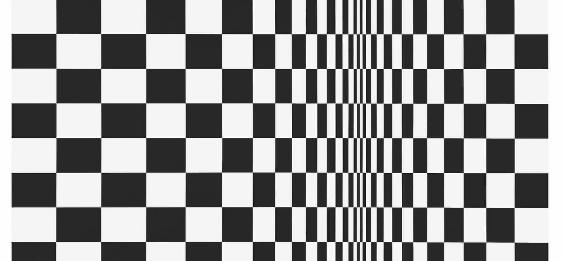
Bridget Louise Riley was born in London in 1931. She originated from a family of artists. Riley’s early work was figurative and painted in a semi-impressionist style. Only in 1960 did Riley begin to develop her unique style of Op art. Her paintings at that time consisted of black and white geometric ornaments that explained the dynamics of the field of view and disoriented the eye. In 1961 she visited the Vaucluse plateau in the south of France and bought an abandoned farm, which later became her studio. Riley’s first solo exhibition occurred in London in the spring of 1962. Overall, the artist is known for her black-and-white works, which she painted in the 1960s. They are a variety of geometric shapes that create the illusion of movement or color.
The art created in 1961 is titled ‘Movement in Squares’. The artist painted a picture measuring 123.2 x 121.2cm applying tempera on a hardboard in London. The picture’s meaning creates a sense of dynamism, which causes the audience imbalance. In this way, the lines seem to move, forcing people to focus on their vision. As a result, personalities realize that the ability to see is valuable, and emotions affect perceptions of the world.
The masterpiece particularly impressed me because I can understand the meaning of a picture through emotions. That is, it allows people to perceive the sense based on what they see. Bridget Riley created a picture in which she skillfully manipulates shapes, colors, and patterns. The painting attracts with its depth and sense of movement. The simplicity of these tools forms the genius of the work.
Works Cited
Riley, Bridget. Movement in Squares. 1961. Arts Council Collection, London. Southbank Centre. Web.